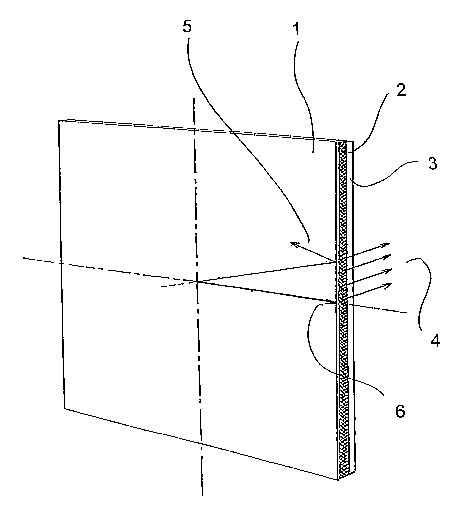Some of the information on this Web page has been provided by external sources. The Government of Canada is not responsible for the accuracy, reliability or currency of the information supplied by external sources. Users wishing to rely upon this information should consult directly with the source of the information. Content provided by external sources is not subject to official languages, privacy and accessibility requirements.
Any discrepancies in the text and image of the Claims and Abstract are due to differing posting times. Text of the Claims and Abstract are posted:
| (12) Patent Application: | (11) CA 2554280 |
|---|---|
| (54) English Title: | LOUDSPEAKER |
| (54) French Title: | HAUT-PARLEUR |
| Status: | Deemed Abandoned and Beyond the Period of Reinstatement - Pending Response to Notice of Disregarded Communication |
| (51) International Patent Classification (IPC): |
|
|---|---|
| (72) Inventors : |
|
| (73) Owners : |
|
| (71) Applicants : |
|
| (74) Agent: | MACRAE & CO. |
| (74) Associate agent: | |
| (45) Issued: | |
| (86) PCT Filing Date: | 2005-01-17 |
| (87) Open to Public Inspection: | 2005-08-04 |
| Availability of licence: | N/A |
| Dedicated to the Public: | N/A |
| (25) Language of filing: | English |
| Patent Cooperation Treaty (PCT): | Yes |
|---|---|
| (86) PCT Filing Number: | PCT/FI2005/000023 |
| (87) International Publication Number: | WO 2005072006 |
| (85) National Entry: | 2006-07-24 |
| (30) Application Priority Data: | ||||||
|---|---|---|---|---|---|---|
|
The invention relates to a loudspeaker, particularly a so-called planar
loudspeaker, the vibrating diaphragm of which is essentially planar and is
attached by its edges to the body (3) of the loudspeaker. There is a resilient
intermediate piece (2) between the diaphragm (1) and the body (3), there is a
resilient intermediate piece (2), which is located essentially around the
entire edge area of the diaphragm (1). The intermediate piece (2) may be, for
example, of a resilient rubber or plastic-based material.
Le haut-parleur décrit, notamment un haut-parleur dit planaire, comprend un diaphragme vibratoire sensiblement planaire et attaché par ses bords au corps (3) du haut-parleur. Une pièce intermédiaire flexible (2) est agencée entre le diaphragme (1) et le corps (3) et une pièce intermédiaire flexible (2) est agencée sensiblement autour de tout le rebord du diaphragme (1). La pièce intermédiaire (2) peut être constituée, par exemple, d'un caoutchouc ou d'une matière plastique flexible.
Note: Claims are shown in the official language in which they were submitted.
Note: Descriptions are shown in the official language in which they were submitted.

2024-08-01:As part of the Next Generation Patents (NGP) transition, the Canadian Patents Database (CPD) now contains a more detailed Event History, which replicates the Event Log of our new back-office solution.
Please note that "Inactive:" events refers to events no longer in use in our new back-office solution.
For a clearer understanding of the status of the application/patent presented on this page, the site Disclaimer , as well as the definitions for Patent , Event History , Maintenance Fee and Payment History should be consulted.
| Description | Date |
|---|---|
| Application Not Reinstated by Deadline | 2010-01-18 |
| Time Limit for Reversal Expired | 2010-01-18 |
| Deemed Abandoned - Failure to Respond to Maintenance Fee Notice | 2009-01-19 |
| Letter Sent | 2006-11-23 |
| Inactive: Single transfer | 2006-10-16 |
| Inactive: Courtesy letter - Evidence | 2006-09-26 |
| Inactive: Cover page published | 2006-09-25 |
| Inactive: Notice - National entry - No RFE | 2006-09-20 |
| Application Received - PCT | 2006-08-31 |
| National Entry Requirements Determined Compliant | 2006-07-24 |
| National Entry Requirements Determined Compliant | 2006-07-24 |
| Application Published (Open to Public Inspection) | 2005-08-04 |
| Abandonment Date | Reason | Reinstatement Date |
|---|---|---|
| 2009-01-19 |
The last payment was received on 2008-01-08
Note : If the full payment has not been received on or before the date indicated, a further fee may be required which may be one of the following
Please refer to the CIPO Patent Fees web page to see all current fee amounts.
| Fee Type | Anniversary Year | Due Date | Paid Date |
|---|---|---|---|
| Basic national fee - standard | 2006-07-24 | ||
| Registration of a document | 2006-10-16 | ||
| MF (application, 2nd anniv.) - standard | 02 | 2007-01-17 | 2007-01-08 |
| MF (application, 3rd anniv.) - standard | 03 | 2008-01-17 | 2008-01-08 |
Note: Records showing the ownership history in alphabetical order.
| Current Owners on Record |
|---|
| OY NORTH WAVE LTD |
| Past Owners on Record |
|---|
| ILKKA TURUNEN |
| SAMI PENTTILAE |